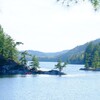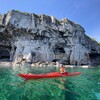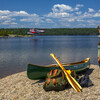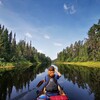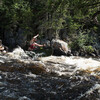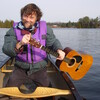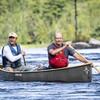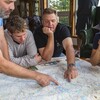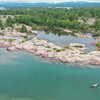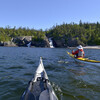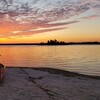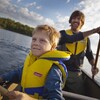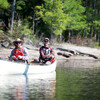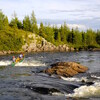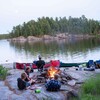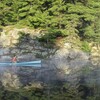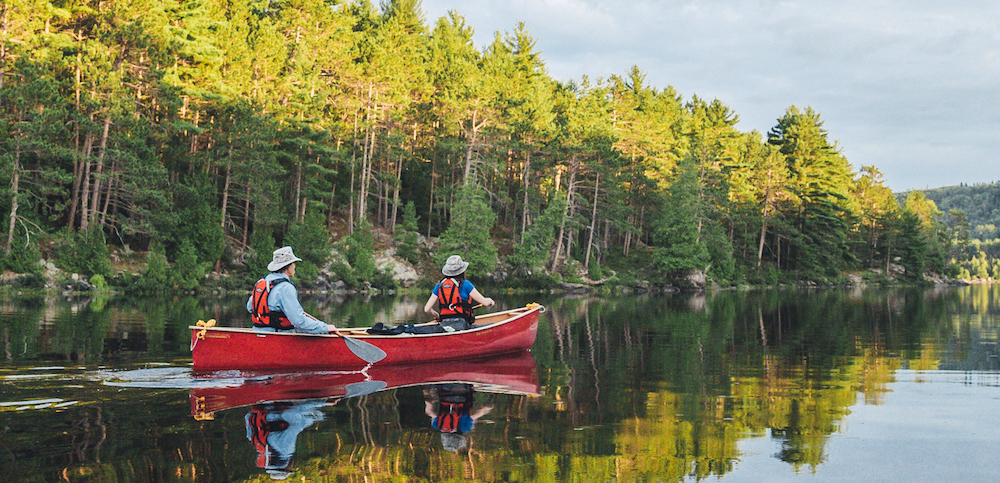What To Know About Canoe Tripping in Woodland Caribou Provincial Park After the Wildfires
As much as Woodland Caribou Provincial Park is a dream destination for canoe trippers, Ontario’s sixth-largest provincial park is first and foremost a boreal wilderness whose ecology is driven by unpredictable wildfires. Located in far Northwestern Ontario, near the town of Red Lake and stretching right to the Manitoba border, Woodland Caribou’s “rocky landscape, shallow soils and jack pine-dominated forest all contribute to regularly occurring, large, hot fires,” explains Park Superintendent Ryan Seeley.
Massive fires in the past five years—including huge 2025 burns in Manitoba’s Atikaki and Nopiming provincial parks that consumed 360,000 hectares and extended into parts of Northwestern Ontario—have radically altered Woodland Caribou’s landscape. But Seeley insists the changes are only natural, and there are still lots of opportunities for experienced paddlers to witness a dynamic tapestry of mature and regenerating forests, tangled waterways and Canadian Shield rock.
This past summer, the big Manitoba fires, along with five local blazes, contributed to about 15,000 hectares of forest fire in Woodland Caribou Provincial Park—on par with the area's long-term annual average. However, Seeley says Park staff have been busy playing catch-up from 2021, when “drought conditions and lightning caused 250,000 hectares to burn, which is just over half of the Park’s total area.”
“Every summer canoe technicians and Park wardens are in the Park clearing portages,” Seeley adds. “The severity of the fire determines how much work is needed. Some routes only require trimming a few branches and picking up some fallen debris. Others require significant chainsaw work and a few hours to get the trail passable again. This year, 71 kilometres of trail were cleared, which is approximately 80 percent of the portages.”
It’s not uncommon for parts of the Park to be closed to visitors during intense fire seasons.
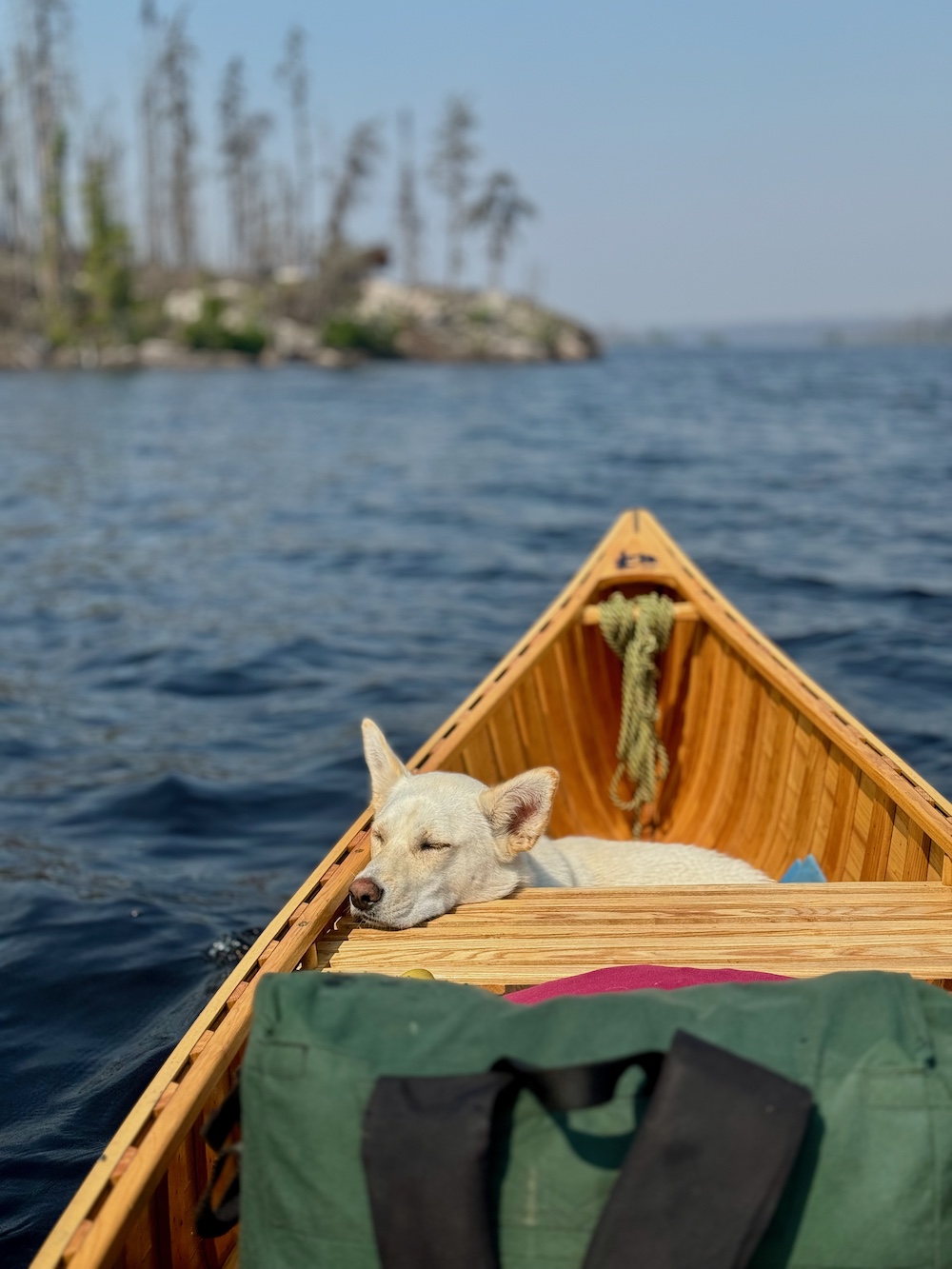
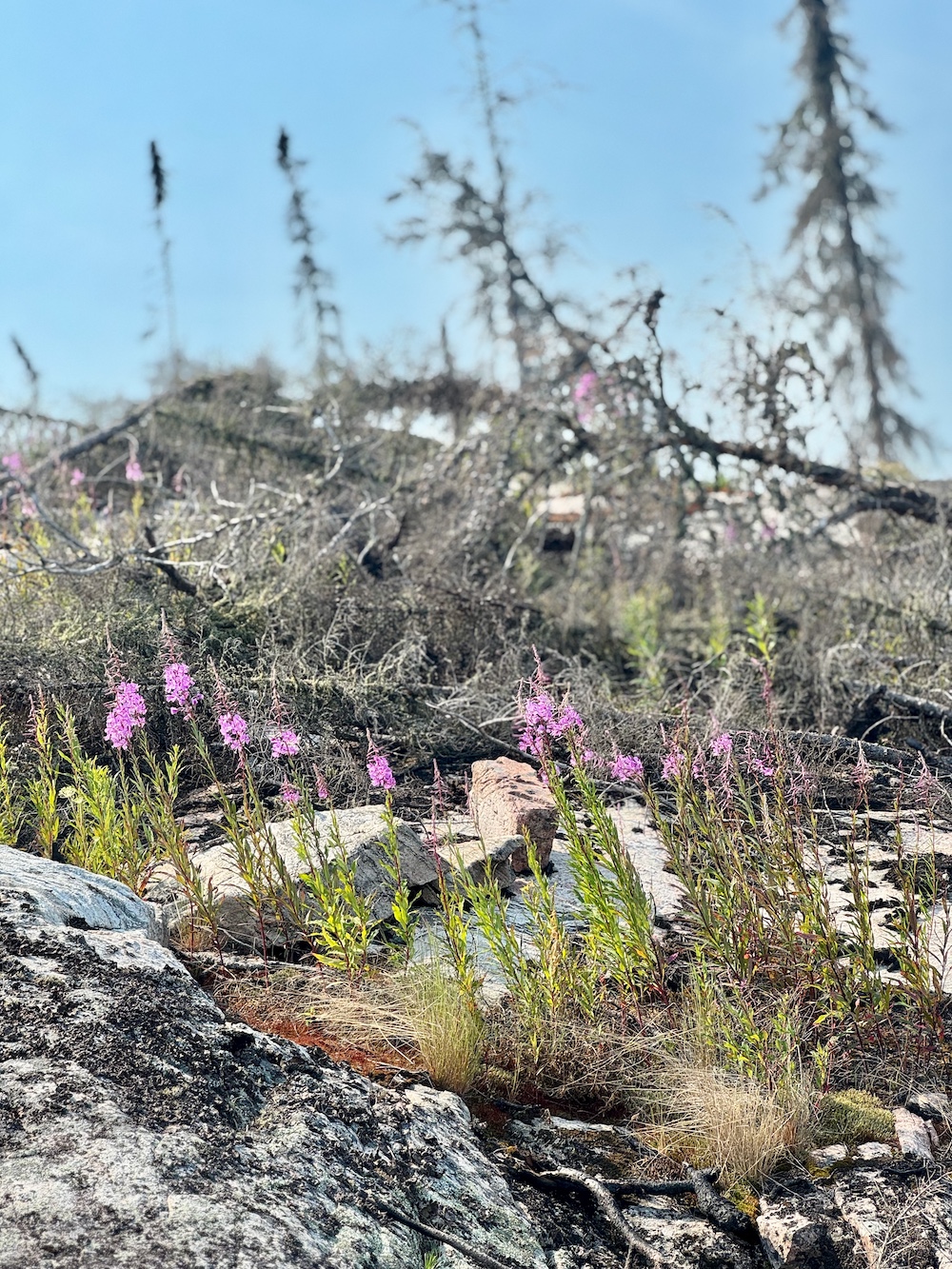
But canoe tripping in the wake of a wildfire is a unique experience. Fire rejuvenates jack pine-dominated forests, which naturally burn every 50 to 100 years. Jack pine cones have evolved to open in response to the intense heat of a wildfire, casting their seeds into the surrounding earth. Charred landscapes are quickly reborn in a succession of sun-loving plants and trees like fireweed and birch. Baby jack pine trees take root and break through the region’s thin layer of soil in mere months. Showy wildflowers, as well as large bushes of raspberry and blueberry plants, also thrive in fire-disturbed areas. The explosion of new growth in turn attracts wildlife like moose and black bears. Once Park authorities have reopened areas to backcountry travel, visitors can witness the austere and subtle beauty of these transformed landscapes.
“Campsites and portages that burn normally have a few extra trees down, but can still be accessed,” explains Seeley. “Ontario Parks staff will target the recently burnt areas early in the spring to make sure there are no major obstacles, and the path is still easy to follow.”
Woodland Caribou Provincial Park is a popular gateway to the Bloodvein River, a Canadian Heritage waterway at the heart of the Pimachiowin Aki UNESCO World Heritage Site, that flows across the Ontario-Manitoba border and into Lake Winnipeg. Seeley says the Bloodvein was “one of the least affected areas by the 2021 fires” and remains a bucket list-worthy choice for skilled paddlers.
“It has been used and cared for by Anishinaabe people for thousands of years and offers paddlers lots of amazing sights,” Seeley adds.
Woodland Caribou is a wilderness park that receives fewer than 1,000 paddlers each season. You can keep up to date on fire activity by monitoring the real-time Ontario Forest Fire Information Map. Fire-related information, including restricted fire zones (campfire bans) and closures are posted on the Woodland Caribou Facebook page.
Seeley recommends first-time Park visitors get a taste for the area with shorter drive-in trips, like the Bunny Loop.
“It’s an easy way to get into the Park and onto some amazing walleye and lake trout fishing lakes,” says Seeley, who encourages anyone looking for trip advice to visit the Ontario Parks website for backcountry tips or call the Woodland Caribou park office. “This is truly a remote and quiet camping park in Northern Ontario.”
Feature photo: By Koen Tholhuijsen // The Dutch Explorer
Recommended Articles
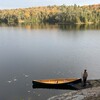
Next-Step Canoe Trip Destinations
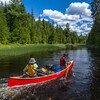
Paddler's Bucket List
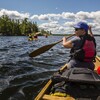
Skip the Portage
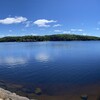
Woodland Caribou Canoe Trip
8 Secret Paddling Hotspots In Ontario
Temagami’s Prettiest Lakes

Reset on the Water
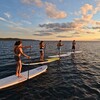
SUPreme Adventure
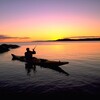
Kayaking in Northern Ontario
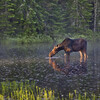
Do you want to take this pic?
TOP Paddling Events
Weekend Trips
7 photography tips
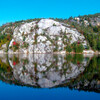
KILLARNEY MAGIC
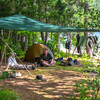
FIND SOLACE
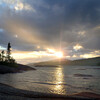
Explore incredible Lake superior
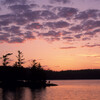
Backcountry Beginners
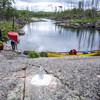
Guide to the Omimi & Quetico Trails
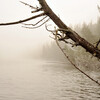
Haunted Waters
